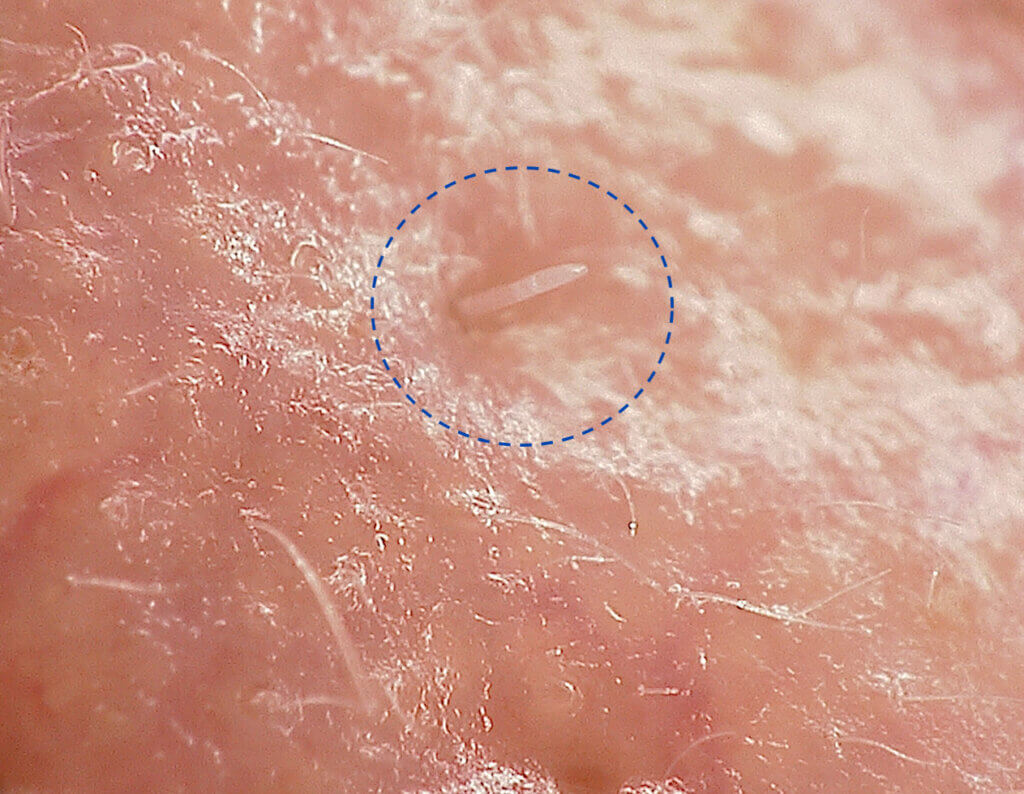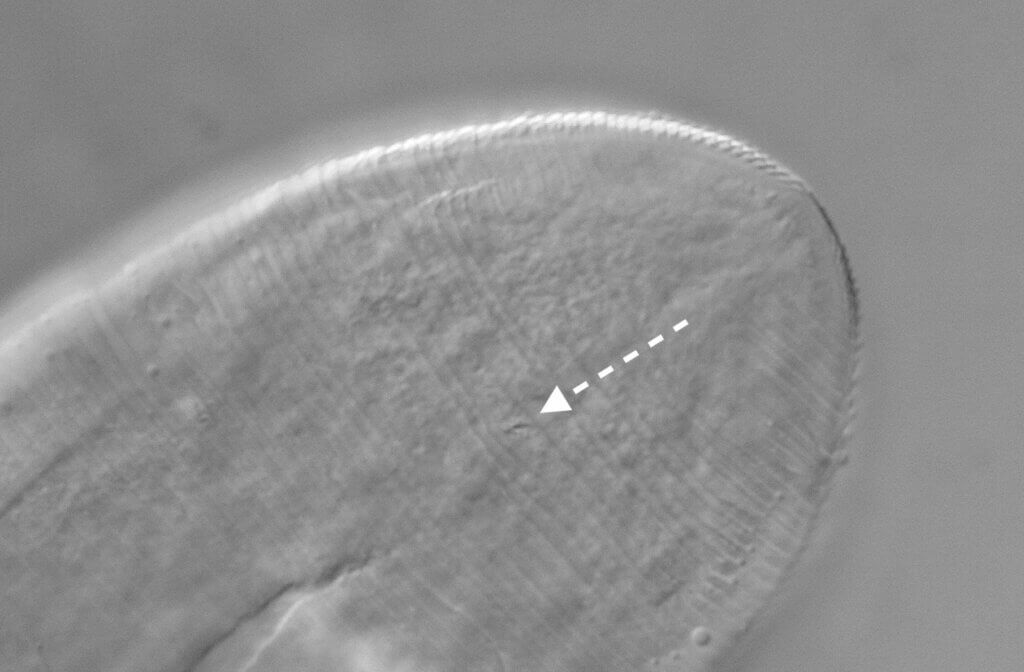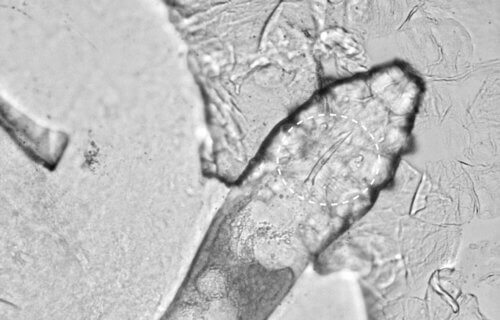
READING, United Kingdom — Tiny eight-legged creatures may be having sex on your face while you sleep, new research explains.
Researchers from the University of Reading say these mites are both invisible to the naked eye and are on the skin of all humans. Moreover, they have some bizarre mating habits.
Entwined couples cling on to our hair as they copulate — the bug world’s version of “swinging from the chandeliers.” They are passed on during birth and carried by almost every person. Numbers peak in adults as pores grow bigger.
Now, scientists have exposed the secret lives of these critters, from their body features to their evolutionary future. The first ever full DNA analysis shows they are becoming such simplified organisms, they may soon become one with us.
“We found these mites have a different arrangement of body part genes to other similar species due to them adapting to a sheltered life inside pores,” says co-lead author Professor Alejandra Perotti in a media release. “These changes to their DNA have resulted in some unusual body features and behaviors.”
There are more than 48,000 species of mites, two of which live on human faces. Researchers can only see them under a microscope – looking almost like a tiny spike. A long cone-shaped body is propped up by stubby legs at one end. Humans end up spending more time with the weird creatures than any other animal. They even protect the skin against acne and scarring by keeping pores unplugged.

Study authors say the mites are relatives of spiders and can be found buried head-down in our hair follicles eating the oils we secrete. They “hook up” with each other near the surface of the skin. Their existence is isolated with no exposure to external threats, competition to infest hosts, or encounters with other mites.
Genetic reduction has enabled them to survive with the minimum repertoire of proteins, the lowest number scientists have ever seen in mites. Their tiny legs are powered by just three single-cell muscles. The mites lack UV protection and have lost the gene that causes animals to wake up in daylight.
They are also unable to produce melatonin – a compound that makes small invertebrates active at night. However, they are able to fuel their all-night mating sessions using the melatonin secreted by human skin at dusk.
Their unique gene arrangement also results in their strange mating habits. The males have a penis that protrudes upwards from the front of their body. They have to position themselves underneath the female when mating and copulate as they both cling onto a human hair.
One of their genes has inverted, giving them a particular arrangement of mouth-appendages that protrude to gather food. This aids their survival at a young age. The mites have many more cells during their youth rather than in adult age, countering the previous assumption that parasitic animals reduce their cell numbers early in development.

Study authors say this evolutionary process is the first step towards the mites becoming symbionts – very closely associated with its much larger human host. The lack of exposure to potential mates that could add new genes to their offspring may have set the mites on course for an evolutionary dead end — and potential extinction.
The phenomenon has been observed in bacteria living inside cells before, but never in an animal. Some scientists had assumed the mites do not have an anus and therefore must accumulate all their feces through their lifetimes before releasing it when they die, causing skin inflammation.
However, the new study confirmed they do have anuses and so have been unfairly blamed for many skin conditions.
“Mites have been blamed for a lot of things,” co-lead author Dr. Henk Braig of Bangor University says. “The long association with humans might suggest that they also could have simple but important beneficial roles, for example, in keeping the pores in our face unplugged.”
The study is published in the journal Molecular Biology and Evolution.
South West News Service writer Mark Waghorn contributed to this report.

